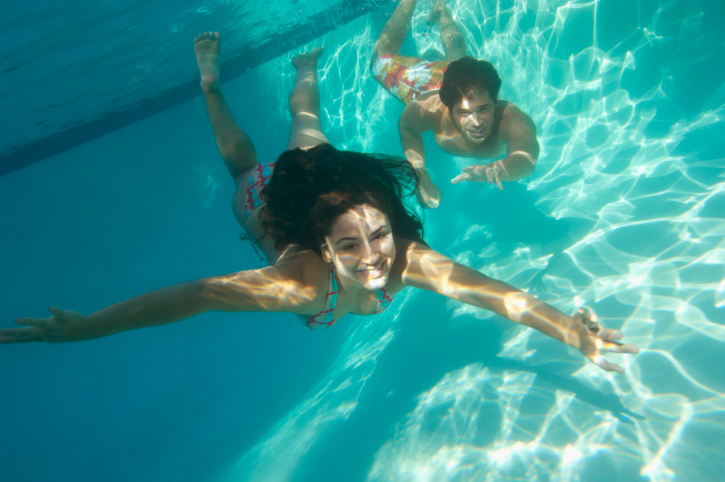Whether at a poolside barbecue, a rope swing at the lake or splashing around in the ocean, one of the best ways to beat the heat in the summer is going for a nice swim with friends or family. But exercise caution, as this fun activity can turn into an emergency in a split second. A 2012 study by the Centers for Disease Control and Prevention (CDC) stated that drowning was the number one cause of injury-related deaths worldwide, and the highest rates of drowning were among children.
According to the American Red Cross Association, the following swimming safety measures can help you avoid danger at the pool, ocean, or lake:
- Swim in designated areas supervised by lifeguards.
- Always swim with a buddy; do not allow anyone to swim alone.
- Never leave a young child unattended near water and do not trust a child’s life to another child; teach children to always ask permission to go near water.
- Have young children or inexperienced swimmers wear U.S. Coast Guard-approved life jackets around water, but do not rely on life jackets alone.
- Maintain constant supervision of children in or near the water.
- Make sure everyone in your family learns to swim well. Enroll in professional, age-appropriate courses, such as Red Cross water orientation and learn-to-swim courses.
- If you have a pool, secure it with appropriate barriers. Many children who drown in home pools were out of sight for less than five minutes and in the care of one or both parents at the time.
- Avoid distractions when supervising children around water.
- If a child is missing, check the water first. Seconds count in preventing death or disability.
- Keep appropriate safety equipment nearby, such as reaching or throwing equipment (life preservers), a cell phone, life jackets and a first aid kit.
- Know how and when to call 9-1-1 or the local emergency number.
- In addition to knowing how to swim, it’s also important to learn how to help in the case of an emergency. Enroll in professional courses, such as the Red Cross’s home pool safety, water safety, or first aid and CPR/AED courses to learn how to prevent and respond to emergencies.
- Protect your skin in and out of the water. Wear sunscreen with a protection factor of at least 30, and be sure to reapply once you have toweled off after a swim.
- It’s important to stay properly hydrated while swimming. Drink plenty of water regularly, even if you’re not thirsty. Avoid drinks with alcohol or caffeine in them.
This summer, be sure to heed these swimming safety tips before jumping into the pool or ocean –it could save the life of you or someone you love.
If you’re a Health Advocate member, remember that your Personal Health Advocate is a great resource for many of your health- and insurance-related needs. If you need to find a new, in-network doctor, investigate a denial of coverage, or find credible health or safety information, give us a call—we’re happy to help!



